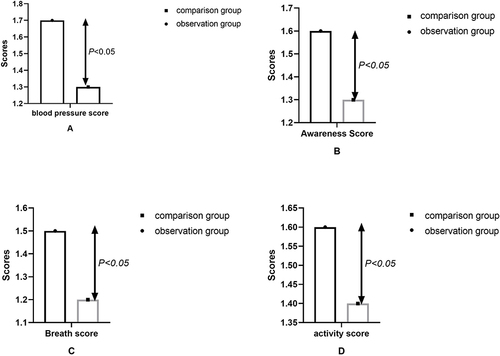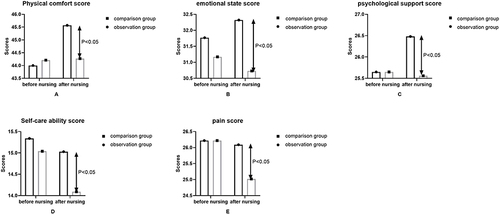Figures & data
Table 1 Comparison of Baseline Data of Two Groups of Patients
Figure 1 Anesthesia recovery assessment. This study uses SPSS 23.0 statistical software to conduct statistical analysis and calculation of anesthesia recovery assessment data. Measurement data are expressed as mean ± standard deviation, and an independent sample t-test is used. It is found that in the anesthesia recovery assessment of the two groups of patients, the vital signs of the patients in the observation groups were significantly better than those in the control group. In addition, the blood pressure, consciousness, and breathing and activity scores of the observation group were significantly higher than those of the control group (P<0.05).

Figure 2 Comparison of lumbar spine function and pain level. This study uses SPSS 23.0 statistical software to conduct statistical analysis and calculation on the comparison data of lumbar spine function and pain level. Measurement data are expressed as mean ± standard deviation, and independent sample t-test is used. Before nursing care, there was no significant difference in lumbar spine function and degree of pain between the two groups (P>0.05). After nursing care, the JOA score of the observation group was significantly higher than that of the control group; however, the NRS score of the observation group was significantly lower than that of the control group (P<0.05).

Figure 3 Nursing effect analysis. This study uses SPSS 23.0 statistical software to conduct statistical analysis and calculation on the nursing effect analysis data. Measurement data are expressed as mean ± standard deviation, and independent sample t-test is used. There was no statistical difference in the effect scores (P>0.05). After nursing care, the physical comfort, emotional state, psychological support, self-care ability, and pain scores of the observation group were significantly higher than those of the control group; however, the NRS score of the observation group was significantly lower than that of the control group (P<0.05).

